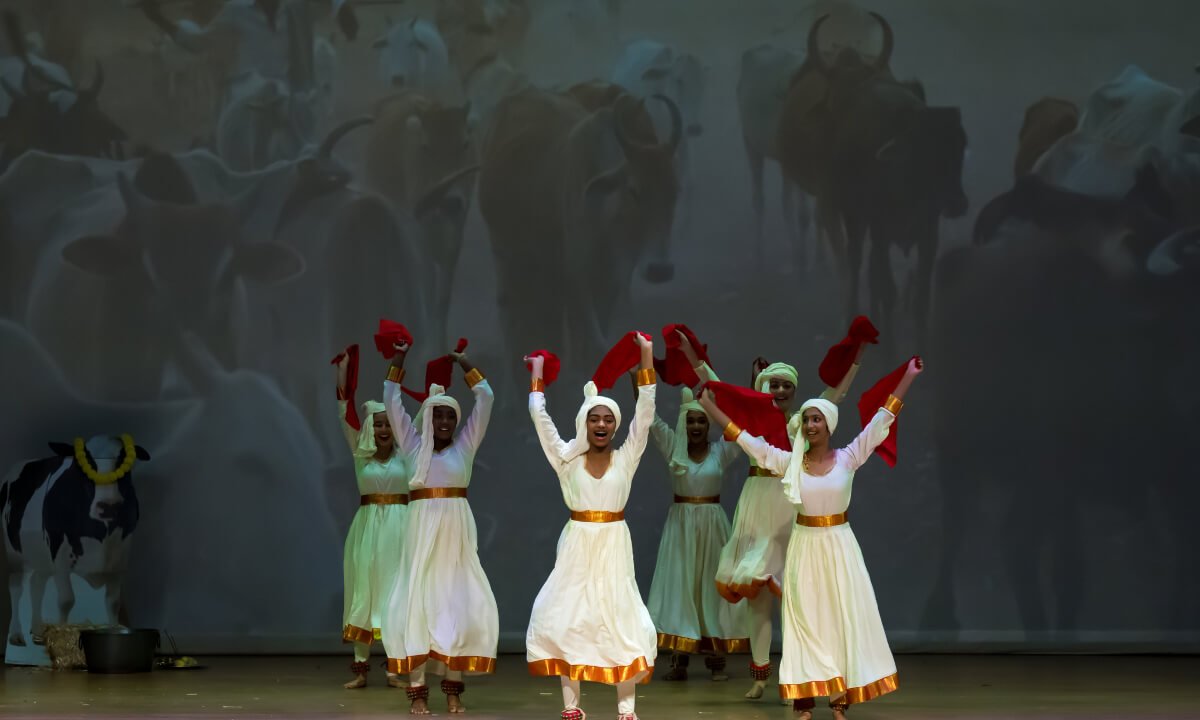folk dance
An energetic folk dance from Goa, performed by the indigenous Dhangar community, celebrating their vibrant culture.

The Dhangar dance from Goa is a traditional folk dance performed by the Dhangar community, an indigenous pastoral community primarily found in the western coastal region of India, including Goa. The Dhangar dance, also known as Dhangari Gaja, is a vibrant and energetic dance form that reflects the cultural identity and heritage of the Dhangar people in Goa.
Students role playing on stage to depict the events of Dhangar folk dance.
In the Dhangar dance, performers, typically men, showcase their agility and strength through rhythmic movements and footwork. The beats of traditional instruments often accompany the dance, such as the dhol (a large drum), tasha (cymbals), and flute, creating an electrifying atmosphere that energizes both the dancers and the audience.
Dhangar men typically wear a traditional attire comprising a dhoti and a kurta. Women traditionally wear a saree along with jewelry, such as earrings, necklaces, and bangles.
Intricate formations characterize the choreography of the Dhangar dance, synchronized steps, and acrobatic feats. Dancers often form circles or lines, moving in harmony to the pulsating rhythm of the music. The lively and spirited nature of the dance reflects the Dhangar community's joyous spirit and celebrates their close relationship with nature and their traditional way of life as shepherds and cattle herders.
Students waving scarves on stage.
The Dhangar dance holds a significant place in Goan culture and is often performed during festivals, weddings, and other social gatherings. It serves to preserve and promoting the cultural heritage of the Dhangar community, passing down traditional dance forms and folk traditions from one generation to the next. Through their performances, Dhangar dancers not only entertain but also pay homage to their ancestors and keep alive the rich cultural legacy of their community in Goa.